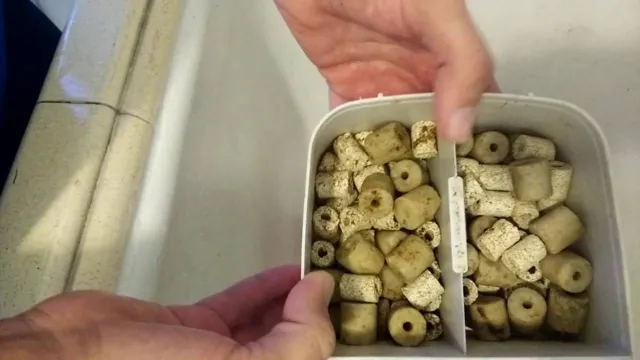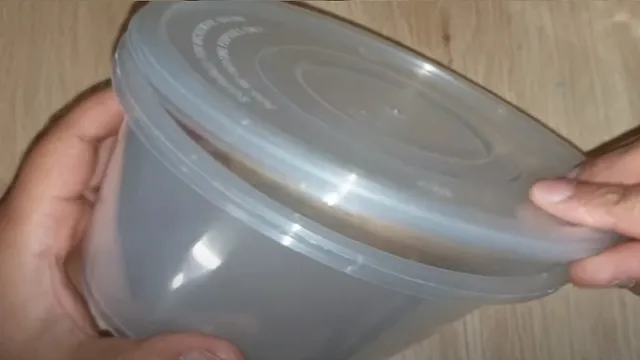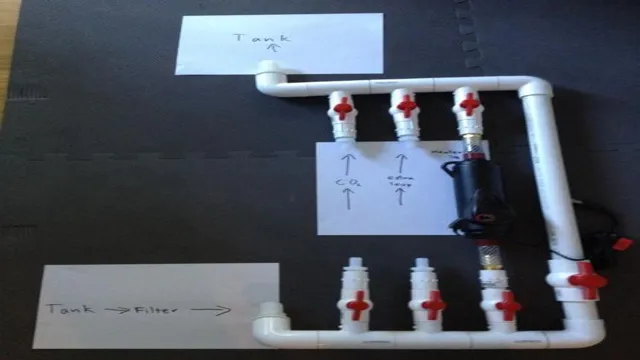Imagine having a stunning in-wall aquarium in your home. The vibrant colors of the fish, the gentle swaying of the plants, and the calming sound of the water can transform any room into a peaceful oasis. But, accessing your in-wall aquarium can be a bit tricky.
You want to make sure your fish are healthy and happy, but you also don’t want to disturb their living space. So, how exactly do you access your in-wall aquarium without causing chaos? In this blog post, we’ll explore some tips and tricks for safely and effectively accessing your in-wall aquarium, so you can enjoy your living art without worry.
Determining the location of the aquarium
If you’re planning on installing an in-wall aquarium, one of the most important things you need to consider is the location. The right location can make all the difference in how accessible your aquarium is and how much enjoyment you and your guests can get from it. The first thing to consider is the size of the aquarium and how much space it needs.
You’ll want to make sure you have enough wall space to fit both the aquarium and any equipment that goes with it. You’ll also want to think about the lighting and whether you need any electrical outlets nearby. Another factor to consider is the weight of the aquarium since it will need a sturdy wall to support it.
In addition, you’ll want to make sure the location is easily accessible so you can clean and maintain the aquarium without any hassle. By taking all of these factors into account, you’ll be better equipped to choose the perfect location for your in-wall aquarium and enjoy it for years to come.
Checking the opening mechanism
Determining the location of your aquarium is crucial before setting it up. You need to find a location that suits the needs of both the fish and the equipment. First and foremost, avoid placing the aquarium close to doors and windows, as drafts can affect the temperature of the tank and cause stress to the fish.
Secondly, ensure that the location you choose has a stable and level surface that can support the weight of the aquarium and its contents. A sturdy aquarium stand or a solid piece of furniture is ideal for this purpose. Also, make sure that the location you choose has easy access to electrical outlets for the equipment.
In addition, avoid placing your aquarium near direct sunlight, as it can cause excessive algae growth and increase the temperature of the tank. By carefully considering these factors, you can ensure that your aquarium is in the best location to keep your fish healthy and happy.

Examining the maintenance hatch
When it comes to setting up an aquarium, determining the location is crucial. One important factor to consider is the maintenance hatch. This is the door through which you’ll access the filtration system or other equipment needed for maintenance or repairs.
Ideally, the hatch should be easily accessible and located in an area that won’t disrupt the aesthetic appearance of the tank. You don’t want to place the tank in a spot where the hatch is difficult to reach, or in a highly visible area where it will detract from the beauty of the aquarium. However, it’s also important to consider the needs of the fish and other aquatic life in the tank.
Before choosing a location, make sure it provides the correct amount of light and temperature, and isn’t in direct sunlight or near a heat source. Overall, selecting the right spot and ensuring easy access to the maintenance hatch will make tank maintenance quick and easy, keeping your fish happy and healthy.
Opening the access panel
To access an in-wall aquarium, you’ll need to locate and open the access panel. These panels are usually located in the walls behind the tank and are designed to allow easy access for cleaning and maintenance. To find the access panel, look for a small hole or seam in the wall behind the aquarium. (See Also: How to Install Aquarium Check Valve: A Step-by-Step Guide for Beginners)
This may be covered by a removable panel or a piece of drywall that can be cut away. Once you’ve located the access point, use a screwdriver or other tool to remove any screws or fasteners and open up the panel. Inside, you should be able to see the back of the aquarium and gain easy access for cleaning and maintenance tasks.
Just be sure to take care when working around water and electrical components, and always follow the manufacturer’s instructions for maintaining your aquarium.
Identifying the correct tools
As you prepare to open the access panel, it is important to have the right tools on hand. A screwdriver is the most commonly needed tool, but it is important to make sure you use the correct type and size for your particular panel. Generally, it is best to use a magnetic screwdriver to prevent losing small screws and to make the process easier.
You may also need a pair of pliers to grip and remove small components or wires. Having a flashlight on hand is also helpful to illuminate the inside of the panel and make it easier to see what you are working on. With the right tools and some careful attention, you can easily open the access panel and start your repair or maintenance task.
Removing the screws or bolts
When it comes to fixing or inspecting appliances, it’s important to know how to remove the screws or bolts holding the access panel in place. The first step is to locate these screws or bolts, which are usually positioned around the edge of the panel. You may need a screwdriver, wrench or pliers to remove them.
It’s important to be cautious when taking out these pieces, ensuring that you don’t damage the surrounding areas or accidentally strip the screws. Once the screws or bolts have been safely removed, gently pull the access panel away from the appliance to reveal its internal components. In doing so, you can easily access and inspect the different parts of the appliance without having to move the entire thing.
With the right tools, patience, and a gentle touch, you can safely remove the access panel and carry out any maintenance work that needs doing.
Lifting the panel to access the aquarium
If you’re new to aquariums, gaining access to your fish can sometimes be a challenge. But there’s a simple solution that even the most inexperienced aquarist can manage. Lifting the panel to access your aquarium is an easy way to gain access to your fish tank without disturbing your setup.
The access panel is typically located at the top of the aquarium build and is secured by clips or a latch. Once opened, you’ll be able to reach into your tank to clean, feed and examine your fish without having to remove anything. Setting up your aquarium with an access panel is a convenient way to save time and effort, making it easier to maintain a healthy environment for your aquatic pets.
Just remember to make sure that the panel is securely attached and doesn’t allow for any leaks. With a little bit of patience and practice, you can easily lift the access panel to access your aquarium with ease.
Performing aquarium maintenance
If you’re lucky enough to have an in-wall aquarium, then accessing it for maintenance might seem like a daunting task. However, with a few simple steps, you can easily perform the necessary upkeep on your aquatic ecosystem. Firstly, locate the access panel, which is usually situated behind a removable section of the wall or a cabinet door.
Once you’ve found the panel, remove the cover to reveal the aquarium’s equipment, such as the filters, heaters, and pumps. Check the filters regularly, and replace any cartridges or media as required to ensure they’re working effectively. It’s also essential to monitor and maintain the water temperature, as fish are very sensitive to changes in temperature. (See Also: How to Make Minecraft Aquarium: A Step-by-Step Guide to Creating a Beautiful Underwater World)
Therefore, it’s advised to invest in a high-quality thermometer and heater to keep the water at a consistent and suitable level. Additionally, testing the water quality is pivotal to the health of your fish and aquatic plants. Use testing kits to check for proper PH levels, nitrates, ammonia, and other chemical balances to ensure a healthy and thriving ecosystem.
By following these steps, you can keep your in-wall aquarium in top condition and enjoy the beauty of your aquatic friends for years to come.
Testing water quality
Performing aquarium maintenance may seem like a daunting task, but it is essential for the health of your fish and other aquatic creatures. One of the most critical aspects of aquarium maintenance is testing the water quality. By testing the water, you can determine if the levels of ammonia, nitrites, and nitrates are within safe limits.
If any of these levels are too high, it can be harmful to your pets and potentially lead to illness or death. Testing the water quality can also indicate if the pH level is appropriate for the species in your aquarium. There are various testing kits available on the market, including liquid and strip tests.
While both options are effective, it’s important to note that liquid tests tend to be more accurate. Regularly testing the water quality is an important step in maintaining a healthy and thriving aquarium.
Cleaning the tank and accessories
Performing regular maintenance on your aquarium is essential to ensure the health and wellbeing of your aquatic pets. One of the most important tasks in maintaining an aquarium is cleaning the tank and accessories. It is recommended to do a partial water change of about 25% every two to four weeks, depending on the size of your tank and the number of fish you have.
Additionally, you should regularly clean the gravel and any decorations in the tank, as they can accumulate debris and waste. Use a siphon to vacuum the gravel and remove any uneaten food, plant matter, or fish waste. It is also crucial to clean your filter regularly to ensure it is functioning correctly.
A clogged filter can lead to poor water quality and potentially harm your fish. Taking the time to perform regular maintenance on your aquarium will ultimately lead to a clean and healthy environment for your aquatic friends to thrive in.
Closing the access panel securely
One important aspect of accessing an in wall aquarium is knowing how to close the access panel securely. After finishing any maintenance or cleaning tasks, it’s essential to make sure this panel is tightly secured to prevent any accidents or leaks. To do this, you can start by screwing the panel back in place with the same screws you removed earlier.
Make sure to apply an even amount of pressure to each screw so that they are tightened uniformly. You may also consider using waterproof sealant tape around the edges of the panel for added security. By taking the time to ensure the access panel is closed correctly, you can enjoy your beautiful in wall aquarium with peace of mind and without any worries.
Conclusion
So there you have it, folks! Accessing your in wall aquarium doesn’t have to be a fishy business. By following these simple steps, you can ensure that your underwater oasis stays clean, healthy, and enjoyable for years to come. Remember, just like a fish needs water to survive, your aquarium needs a little TLC every now and then to truly thrive. (See Also: How to Keep Wild Fish in Aquarium: Tips and Techniques for a Healthy Environment)
And with these guidelines under your belt, you’ll be sure to impress all your friends and fish with your aquarium upkeep prowess. Happy swimming!”
FAQs
What is an in-wall aquarium?
An in-wall aquarium is a type of aquarium that is built into the wall of a room.
How do I access an in-wall aquarium?
Access to an in-wall aquarium can be through a door or panel, often located on the front-facing side of the aquarium.
What are the benefits of having an in-wall aquarium?
In-wall aquariums are space-saving and provide a unique design element to any room. They can also be easier to maintain than traditional aquariums.
What size should an in-wall aquarium be?
The size of an in-wall aquarium can vary depending on the space available and the desired aquatic life. It is recommended to consult with a professional aquarium installer for guidance.
Can I install an in-wall aquarium myself?
In-wall aquarium installation can be a complex process and should be done by a professional aquarium installer to ensure proper safety and functionality.
What types of fish are best suited for an in-wall aquarium?
Fish that are well-suited for an in-wall aquarium include small to medium-sized freshwater fish, such as tetras, guppies, and rasboras.
How much does an in-wall aquarium cost?
The cost of an in-wall aquarium can vary depending on the size, complexity, and type of aquatic life desired. It is recommended to consult with a professional aquarium installer for an accurate cost estimate.







